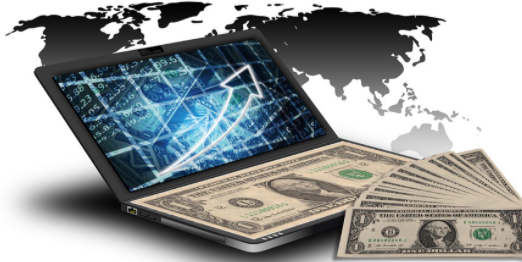Current Trends in E-Commerce
By Dr. Terry Kibiloski
Beginning with COVID-19 keeping people at home throughout the world, e-commerce has increased exponentially, resulting in fierce competition between both business-to-business (B2B) and business-to-consumer (B2C) sellers. The biggest winners so far have been seasoned wholesalers, large global retailers, and niche product retailers not normally a key part of e-commerce. For the consumer, the buying trend seems to have moved from lowest price to best customer experience and overnight delivery.
 This phenomenal increase of e-commerce is happening worldwide, with over 80% of consumers throughout the world shopping online during the global pandemic, including online buyers spanning all age groups from Generation Z to Baby Boomers. This new focus on e-commerce has forced Internet infrastructure companies to keep running just to catch up with the unprecedented increase in buyers, sellers, and transactions. Some analysts believe that there may be a drop in online sales after global buyers feel safer visiting their local retailers, while others feel that the convenience of shopping at home with next day delivery may be too compelling to return to the traditional shopping of spending time and money while battling traffic to get to brick and mortar stores.
This phenomenal increase of e-commerce is happening worldwide, with over 80% of consumers throughout the world shopping online during the global pandemic, including online buyers spanning all age groups from Generation Z to Baby Boomers. This new focus on e-commerce has forced Internet infrastructure companies to keep running just to catch up with the unprecedented increase in buyers, sellers, and transactions. Some analysts believe that there may be a drop in online sales after global buyers feel safer visiting their local retailers, while others feel that the convenience of shopping at home with next day delivery may be too compelling to return to the traditional shopping of spending time and money while battling traffic to get to brick and mortar stores.
 Some estimates show that in 2020 over 200 million people shopped online for the first time, with many analysts expecting many more consumers to become comfortable with online shopping in the near future. With this positive customer trend, the future of e-commerce will undoubtedly continue to thrive for seasoned online wholesalers and retailers, as well as new entrants who generally are quick to offer new and better customer service experiences using creative ideas and the newest technology. In short, the gold rush of e-commerce is rapidly increasing and offering great opportunities for buyers and sellers alike. One of the biggest trends in new entrants are offerings of household items, household consumables, healthcare, and personal care products. As online shopping increases so does bankruptcies and brick and mortar store closures.
Some estimates show that in 2020 over 200 million people shopped online for the first time, with many analysts expecting many more consumers to become comfortable with online shopping in the near future. With this positive customer trend, the future of e-commerce will undoubtedly continue to thrive for seasoned online wholesalers and retailers, as well as new entrants who generally are quick to offer new and better customer service experiences using creative ideas and the newest technology. In short, the gold rush of e-commerce is rapidly increasing and offering great opportunities for buyers and sellers alike. One of the biggest trends in new entrants are offerings of household items, household consumables, healthcare, and personal care products. As online shopping increases so does bankruptcies and brick and mortar store closures.
The increase in international e-commerce has spawned an increase in support products like currency and language conversion apps, as well as a move away from television ads to digital advertising to get your message out to the world market. This has been extremely profitable for large social media companies. The e-commerce world began with a disruption caused by the pandemic, moved to an evolution of new ideas for better marketing, and has evolved into a revolution of new technology and innovative business models that are transforming the way the world buys and sells.
 Another huge trend is mobile commerce, m-commerce. Where in the past, much of e-commerce was conducted on home laptops and desktops, the trend has quickly moved to buyers using mobile devices like tablets and smartphones. The advancement of voice and artificial intelligent (AI) technology has spawned an even easier way to shop online, catering to the daily commuter as they order everything from lunch to groceries for curbside pickup.
Another huge trend is mobile commerce, m-commerce. Where in the past, much of e-commerce was conducted on home laptops and desktops, the trend has quickly moved to buyers using mobile devices like tablets and smartphones. The advancement of voice and artificial intelligent (AI) technology has spawned an even easier way to shop online, catering to the daily commuter as they order everything from lunch to groceries for curbside pickup.
In short, everything you thought you knew about e-commerce is changing by the moment. Yes, by the moment. While you are sleeping, someone else in the world is at work developing new ideas, new business models, and new technology to make e-commerce even better, faster, more convenient, and more profitable.






